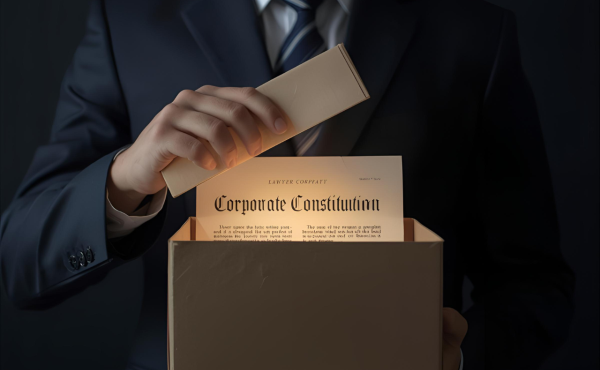
The ECGI blog is kindly supported by

The pathology of passivity: Shareholder passivity as a false narrative in corporate law
Are public company shareholders naturally or rationally passive? The idea of shareholder passivity gained wide traction after Adolf Berle Jr and Gardiner Means invoked it repeatedly in their 1932 book, The Modern Corporation and Private Property. Decades later, the law and economics movement refashioned shareholder passivity as ‘rational apathy.’ In Berle and Means’s conception, shareholder passivity was irresponsible and blameworthy, but also inevitable in light of the separation of ownership and control. In the law-and-economics view, shareholder passivity evidenced the ‘free rider problem’ and was explained by incentives operating on homo economicus. It was rational decision-making by utility-maximizing investors and, therefore, a good (and efficient) thing. After shareholder passivity was reconceptualized by the law and economics movement, it ceased to be a governance problem in need of a legal solution.
In “The Pathology of Passivity,” a chapter in the forthcoming book, Hidden Fallacies in Corporate Law and Financial Regulation (Saule Omarova, Alexandra Andhov & Claire Hill, eds.), I argue that the ‘Passivity Thesis’ was descriptively and normatively flawed. In both its New-Deal-era and law-and-economics versions, the Passivity Thesis located all of the responsibility for passivity in shareholders themselves, deflecting attention away from the role of corporate law in promoting or constraining shareholder participation. In fact, there are many reasons to believe that shareholder governance might have developed differently—that American shareholders might have taken a more active role in corporate organization—if corporate law had created mechanisms to make this possible.
Until Berle and Means popularized the idea of shareholder passivity, the absence of shareholders from corporate governance was commonly described as ‘absentee ownership,’ and it was presented as a system-wide problem, not an individual failing. Andrew Carnegie decried absent shareholders in the 1890s. Louis D. Brandeis wrote about absentee shareholding before and after joining the U.S. Supreme Court. In 1923, Thorstein Veblen published Absentee Ownership and Business Enterprise in Recent Times: The Case of America, which addressed the problem in detail. The shift from viewing ‘absentee ownership’ as a flaw of the emerging corporate law regime, to viewing ‘shareholder passivity’ as a personal quality of the small shareholder—one that manifested the small shareholder’s lack of aptitude for governance—marked an important turning point in corporate theory.
The Passivity Thesis drew inspiration from emerging trends in the capital market, including the fact that women had become the fastest-growing segment of the shareholder class. During the Great Bull Market, the percentage of women shareholders rose steeply at public companies, and women were reported to outnumber men as shareholders at leading companies like General Electric (1921), the Southern Pacific Railway (1927), and the Pennsylvania Railroad (1927). At General Motors, women’s percentage among shareholders increased from about 22% in 1921 to 40% in 1930. At U.S. Steel, between 1917 and 1927, the number of women stockholders increased by 25.4%—more than double the rate of increase of men. The flood of women into shareholding was widely covered by the popular and financial press, during a period when ‘separate spheres’ ideology presented women as naturally passive and docile, in contrast to men, who were seen as virtuously action-oriented.
At the same moment that Berle and Means were popularizing the trope of the passive shareholder, an emerging movement for ‘corporate democracy’ advocated an active, participatory role for shareholders in corporate governance. Shareholder activist Lewis D. Gilbert led the movement in the 1930s, 1940s, and 1950s, pressing for changes in corporate practice that would have made it easier for shareholders to obtain information, attend meetings, and vote effectively. He advocated for regional shareholder meetings and cumulative voting, and pressed the SEC to adopt the Shareholder Proposal Rule. Gilbert believed that shareholder participation was essential to self-government and to the American democratic project. ‘Participation in the nation’s business is the only real democracy,’ he asserted, ‘in a modern world where it is indisputable that industry and finance are primary even in the field of political decision.’ Attendance at shareholder meetings shot up during this period, even while companies discouraged turnout. AT&T reportedly turned down an offer from CBS to televise the company’s annual shareholders’ meeting (at no charge) in the 1950s. Companies essentially turned away from opportunities to harness new technologies to inform and empower investors.
More recently, of course, the rising pitch of shareholder activism, particularly around environmental, social, and governance (ESG) matters and the new universal proxy, challenges the passive shareholder paradigm. The validity of the ninety-year-old Passivity Thesis is called into serious question by twenty-first-century shareholders who demand an active role in the governance of public companies. This renewed activism is creating demand for innovation in corporate law and for new participatory mechanisms such as pass-through and client-directed voting, and advanced voting instructions.
Ultimately, the Passivity Thesis helped to solidify a particular set of power arrangements in corporate organization, which (at least in the United States) spilled into the political sphere once corporations began engaging in significant political activity in the 1970s. By habituating a large segment of Americans to passive corporate governance, the Passivity Thesis influenced the political economy of citizenship—that is, the economic arrangements that shape Americans’ experiences and aspirations of self-government. The Passivity Thesis advances a normative theory about (corporate) democracy. It teaches shareholders to relinquish power in the organization, when doing so is efficient or individually wealth-maximizing. We must ask whether the influence of this passive conception of governance has extended beyond the economic sphere, and contributed to modern ideas about civic virtue, self-rule, and the role of the voting citizen in democratic governance.
-------------------------------
By Sarah C. Haan, Class of 1958 Uncas and Anne McThenia Professor of Law, Washington and Lee University School of Law, Visiting Professor of Law at the University of Virginia School of Law.
If you would like to read further articles on the history of corporate governance, click here
The ECGI does not, consistent with its constitutional purpose, have a view or opinion. If you wish to respond to this article, you can submit a blog article or 'letter to the editor' by clicking here.





